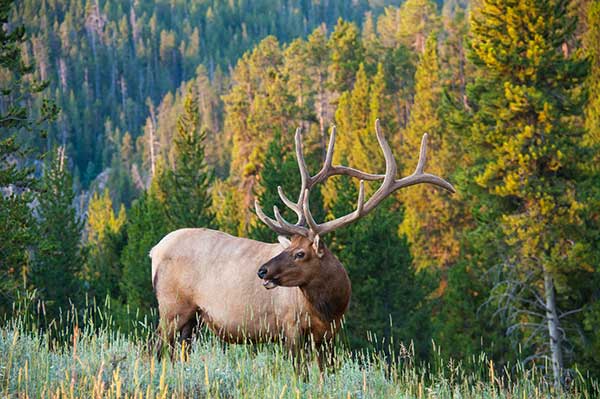The withdrawal of controversial habitat security standards by the U.S. Forest Service illustrates that our public lands do, indeed, belong to us all and we can all have an influence on how they are managed. It also shows the value of hunters uniting and working together.
In response to concerns by Montana hunters and various hunting conservation organizations, the Helena-Lewis and Clark National Forest recently dropped an amendment to the Divide Travel Plan that would have changed habitat security standards. The Forest Service decided, instead, to return to time-tested, science-based, big-game habitat security standards.
“We’re pleased that they dropped the amendment and went back to the old standards,” says Gayle Joslin of Helena Hunters and Anglers, an affiliate of MWF. “Standards are measurable and definable at the landscape level and this recognizes vegetative cover as an important thing.”
As those of us who have crawled through dense, dog-hair lodgepole thickets; climbed up and down steep, slippery slopes covered in of tag alder, and slowly worked our way through piles of blowdown in dark spruce bottoms in pursuit of wild elk . . . well, elk aren’t easy to hunt. But that’s a good thing. If hunting were too easy, there’d be less elk and more hunting restrictions such as limited permits. Or, in many places, elk flee to private lands off limits to hunting. What makes some places tough to hunt is what wildlife biologists call ‘habitat security’. Numbers of hunters, hunting-equipment technology, open-road density and the percentage of terrain covered by forests and other vegetation can all influence elk vulnerability and habitat security. Protecting and enhancing habitat security and reducing vulnerability often results in healthier, more balanced elk herds; good bull-to-cow ratios; more mature bulls in herds; higher calf survival rates and, therefore, more and better hunting opportunities.
Extensive, cooperative research between the Forest Service, state fish and game agencies and several timber companies in the 1970s and 1980s helped define terms such as “bull elk vulnerability” and “habitat security,” and led to the development of standards that the Forest Service has used when developing management plans. When the Helena-Lewis and Clark National Forest decided to adopt new standards, MWF, Helena Hunters and Anglers, Anaconda Sportsmen’s Association, Montana Backcountry Hunters and Anglers and the Clancy-Unionville Citizens Task Force filed a lawsuit against the Forest Service calling for further analysis and justification for the change. In response, the Forest Service decided to avoid litigation and drop the amendment.
“I believe it’s in the best interest of the public for me to withdraw the Record of Decision for the Amendment for the Divide Travel Plan Area Divide Travel Plan,” Forest Supervisor Bill Avey stated in a decision letter dated December 2.
This is good news for wild elk, and good news for those of us who hunt wild elk.
David Stalling is the Western Field Rep. for Montana Wildlife Federation. Reach him at dstalling@mtwf.org


